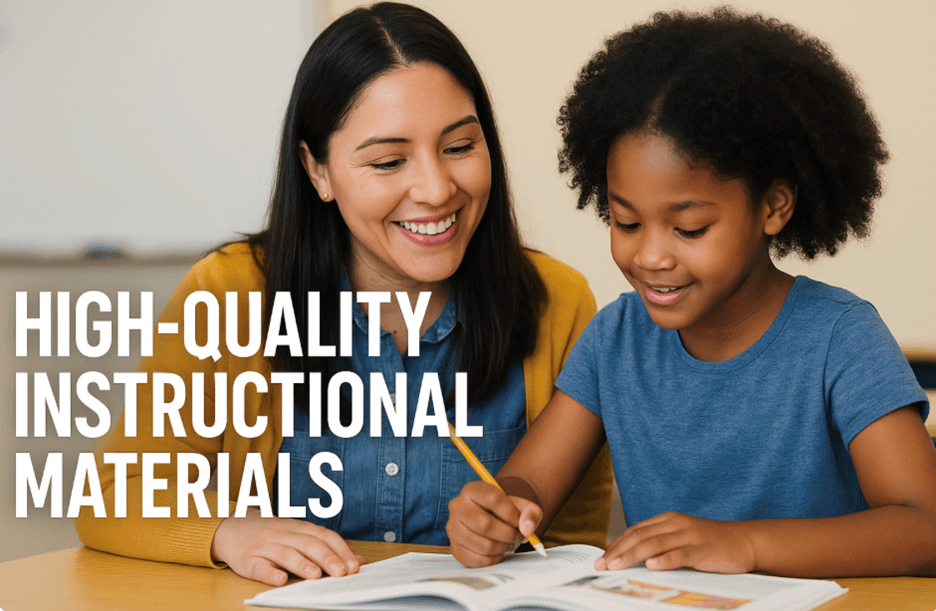
Evolution of Educational Techniques
Over the past century, educators and researchers have been chasing the same elusive goal: How do we teach students to write well? Writing isn’t just a set of skills; it’s a complex act of thinking, problem-solving, and self-expression that requires a clear methodology to guide effective instruction. Yet, for much of the twentieth century, writing instruction focused narrowly on surface features like grammar, handwriting, and correctness rather than the cognitive and motivational processes that make writing meaningful.
That long arc of trial and discovery is exactly what Steve Graham and his colleagues examined in Trends in Writing Intervention Research: 1930s and Onward (2025). Their review traces the evolution of writing intervention studies across nine decades, revealing how our field has moved from mechanical drills to the deeply strategic and self-regulated approaches that define the science of writing today.
What emerges from this sweeping analysis is more than a historical account; it’s a powerful validation of how far we’ve come and where the evidence leads us next. For educators searching for what truly works in writing instruction, the story points squarely toward frameworks like Self-Regulated Strategy Development (SRSD), a model grounded in decades of research on what helps students not only write better but also think and learn through writing.
The Early Years: When Writing Wasn’t About Writing
In the early decades of writing research, instruction was dominated by mechanical concerns. Classrooms in the 1930s through the 1960s often treated writing as a product to be corrected, not a process to be taught. Interventions focused on penmanship, spelling, and grammar drills. Students were expected to improve by practicing these isolated skills repeatedly, much like athletes refining a single motion.
This approach reflected a behaviorist view of learning. Students could master writing through imitation and reinforcement, without exploring the cognitive work behind composing text. The assumption was that good writing would naturally emerge once students could form letters, spell words, and follow grammatical conventions.
But over time, educators began to notice that despite hours of practice, students still struggled to express ideas clearly, organize their thoughts, or engage readers. The focus on correctness didn’t translate into better thinking or communication. Something fundamental was missing: instruction that engaged the mind, not just the mechanics.
The Process Revolution: From Product to Process
By the 1970s and 1980s, the field of writing instruction experienced a profound shift. Researchers began to recognize that writing wasn’t simply a matter of recording thoughts but a way of generating them. The cognitive revolution reframed writing as a process involving planning, translating, editing, and revising, all driven by purposeful thinking.
This new lens sparked a wave of studies exploring how writers plan their ideas, set goals, and monitor their progress. The work of scholars like Flower and Hayes provided a blueprint for understanding writing as problem-solving, a task that required mental strategies rather than mechanical routines.
In classrooms, this thinking evolved into what became known as “process writing,” which aimed to improve literacy through active engagement with the writing process. Teachers often encouraged students to brainstorm, draft, revise, and publish in workshop-style settings. Students were given more ownership and time to discover their voices. For the first time, writing instruction acknowledged that good writing develops through reflection and iteration.
Yet process writing, while liberating, often lacked structure. Many students, especially those who struggled academically, floundered when asked to “just write.” The freedom to explore didn’t necessarily provide the guidance they needed to plan effectively or sustain motivation. Researchers began asking: What if we could make the invisible mental processes of good writers explicit? What if we could teach struggling writers the strategies that strong writers instinctively use?
The Strategy Instruction Era: Teaching the Writer How to Think
These questions gave rise to a new generation of research in the 1980s and 1990s that would transform writing instruction forever. Instead of assuming students would “discover” how to write, researchers began teaching them how to plan, organize, and regulate their thinking through techniques such as sentence combining.
Steve Graham and Karen Harris emerged at the forefront of this movement. Through decades of research, they developed what would become the Self-Regulated Strategy Development (SRSD) model, a structured, flexible framework for teaching students both the strategies for writing and the self-regulatory skills to use them effectively.
The core idea was simple yet revolutionary: strong writing requires both knowledge (what to do) and control (how to manage yourself as you do it). Students learned explicit strategies like POW (Pick ideas, Organize notes, Write and say more) and TREE (Topic sentence, Reasons, Explain reasons, Ending). But they also learned how to set goals, talk themselves through challenges, and reflect on their progress.
This dual focus addressed what earlier decades had missed. Teaching writing wasn’t just about cognitive strategies but about motivation, confidence, and persistence. SRSD showed that students achieve remarkable growth when they understand why strategies work and learn to take charge of their writing.
The Self-Regulation Breakthrough: Writing as Thinking and Self-Management
SRSD didn’t just change how we teach writing; it changed how we understand writers. By combining cognitive, behavioral, and emotional components, SRSD reframed writing as a self-regulated act of problem-solving. Students weren’t passive recipients of instruction; they became active agents in their learning.
The research that followed was extraordinary. Study after study revealed that SRSD improved the quality of student writing and enhanced motivation, self-efficacy, and independence. Students learned to see themselves as capable writers, an identity shift that research consistently connects to higher achievement.
This was the breakthrough decades of fragmented interventions had been building toward: a model that treated writing as a teachable, transferable, and empowering skill.
The Twenty-First Century: Expanding What Writing Means
As the field entered the new millennium, writing research began to diversify in scope and purpose, with a growing emphasis on assessment. Studies explored how writing strategies could be applied across genres like narrative, opinion, and informative, as well as across populations from early elementary through high school and beyond.
Researchers also began to examine how writing connects to other domains: reading comprehension, critical thinking, content learning, and even emotional regulation. The line between reading and writing blurred, as evidence showed that the two processes feed each other in powerful ways. When students write about what they read, they deepen comprehension; when they read to learn how authors express ideas, they become stronger writers.
Technology further reshaped the landscape. Digital writing tools, collaborative platforms, and multimodal composition expanded what it means to “write.” Yet even in these new contexts, strategy instruction and self-regulation principles held strong. Students still needed structure, guidance, and reflection to make meaning—exactly what SRSD provides, regardless of medium.
Patterns Across Ninety Years: What the Research Reveals
The Graham et al. (2025) review offers a remarkable bird’s-eye view of the entire field. Over ninety years of intervention studies, a clear trend emerges: writing instruction has steadily moved away from isolated skill drills and toward integrated, strategic, and self-regulated approaches.
The evidence shows that interventions focused on grammar or handwriting alone rarely improve overall writing quality. By contrast, programs that explicitly teach planning, organizing, revising, and self-regulation consistently yield stronger results. These patterns hold true across ages, ability levels, and instructional settings.
In other words, the science of writing has reached consensus on what works: teach students how to think like writers, not just write like students. The SRSD framework embodies that shift more comprehensively than any model to date.
What This Means for Classrooms Today
This history carries a clear message for teachers and administrators: effective writing instruction is intentional, explicit, and deeply human. It’s not about assigning more writing, it’s about teaching students how to write well and giving them tools to sustain effort when it gets hard.
The research legacy summarized by Graham and colleagues underscores several key practices that schools should prioritize today, emphasizing the critical role of literacy in these practices:
- Teach writing strategies explicitly. Don’t assume students know how to plan or elaborate; show them, model it, and let them practice with support.
- Link writing and reading. Treat them as two sides of the same coin. Writing deepens reading comprehension and vice versa.
- Build metacognition and motivation. Teach students to set goals, use self-talk, and reflect on their growth.
- Create consistent systems across grades. When every teacher shares a common language and structure for writing, students build transferable habits of mind.
- Use evidence-based models like SRSD. Frameworks developed through decades of research ensure that instruction is engaging and effective.
The most encouraging insight from this 90-year journey is that change is possible and doesn’t take decades. Once teachers implement structured, evidence-based approaches like SRSD, student writing quality, confidence, and independence gains appear rapidly. Teachers often say they can never return to how they taught writing.
Looking Ahead: The Next Chapter in Writing Research
If history has shown us anything, it’s that writing research is never static. Graham et al. note that the next frontier lies in integrating writing instruction with technology, collaboration, and reading-to-learn models. Artificial intelligence and adaptive learning tools are already beginning to reshape how students receive feedback and plan their writing.
Yet even as tools evolve, the principles remain the same. Students will always need to understand why they write, how to organize their ideas, and how to persevere when challenges arise. Self-regulation, strategy use, and explicit instruction are the constants that define the foundation of effective writing, regardless of future innovations.
SRSD offers precisely that adaptable foundation. It’s not a script or a program; it’s a framework teachers can make their own. Whether guiding first graders through their first opinion paragraphs or helping high school students compose persuasive essays, SRSD allows educators to teach writing as both a skill and empowerment.
A Century in the Making
The story told in Trends in Writing Intervention Research: 1930s and Onward is ultimately one of progress and persistence. For ninety years, researchers have been refining our understanding of what helps students become writers. Each decade builds on the lessons of the last, gradually revealing that writing success depends not on correction or compliance but on cognition, motivation, and self-direction.
Today, educators have the advantage of standing on that century of evidence. We know what works, which includes regular assessment to measure progress and inform instruction. We have models integrating cognitive science, motivation theory, and classroom practicality. And we have proof: thousands of teachers and students worldwide who have seen that everything changes when writing instruction becomes strategic and self-regulated.
SRSD didn’t appear overnight. It represents the culmination of decades of research, collaboration, and classroom testing. But its true power lies in what it offers to the next generation of teachers and learners: a pathway to make writing not just a skill to master, but a way of thinking that transforms learning.
As we look ahead to the next century of writing research, one truth endures: effective writing instruction begins when we teach students to take charge of their own minds, one strategy at a time.

About the Author
Randy Barth is CEO of SRSD Online, which innovates evidence-based writing instruction grounded in the Science of Writing for educators. Randy is dedicated to preserving the legacies of SRSD creator Karen Harris and renowned writing researcher Steve Graham to make SRSD a standard practice in today’s classrooms. For more information on SRSD, schedule a risk-free consultation with Randy using this link: Schedule a time to talk SRSD.





















